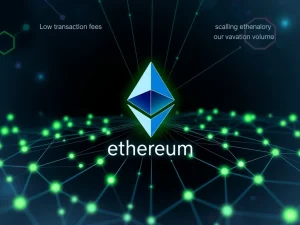Ethereum Fusaka: Crucial Upgrade Nears Mainnet Launch After Hoodi Testnet Success

The cryptocurrency world keenly observes Ethereum’s advancements. Its next major network enhancement, the Ethereum Fusaka upgrade, recently completed a vital test. This significant development moves the network closer to a more scalable and secure future. The successful deployment on the Hoodi testnet marks a pivotal moment for developers and users alike. It confirms the readiness for a crucial mainnet launch.
Ethereum Fusaka Nears Mainnet Launch
The highly anticipated Ethereum Fusaka update is now live on Hoodi, its final testnet. This milestone sets the stage for a planned December 3 mainnet launch. The upgrade aims to bring several security and scalability improvements to the blockchain. Nethermind, a widely used validator client, confirmed the smooth upgrade. They noted it as “another smooth upgrade, another key milestone on the road to Fusaka.” This successful testnet debut indicates strong progress for the Ethereum ecosystem. It prepares the network for enhanced performance and efficiency.
Key Improvements of This Ethereum Upgrade
Fusaka integrates several Ethereum Improvement Proposals (EIPs). These EIPs significantly enhance network capabilities. A notable inclusion is PeerDAS (EIP-7594). PeerDAS introduces Peer Data Availability Sampling. This allows validators to read smaller pieces of data from Layer 2 networks. Consequently, it boosts node efficiency. It avoids the need to process full "blobs" of data. Furthermore, EIP-7825 and EIP-7935 are part of this update. These proposals aim to raise the gas limit and improve overall efficiency. They prepare Ethereum for parallel execution, processing multiple smart contracts simultaneously. Other EIPs in the update focus on improving zero-knowledge rollups. These collective enhancements directly contribute to improved blockchain scalability.
The Phased Rollout of Fusaka’s Mainnet Launch
The implementation of Fusaka will occur across three distinct stages. Each stage is critical for a stable and effective rollout. First, the actual mainnet launch will activate the core upgrade. This initial phase integrates the fundamental changes. Second, an EIP implementing the blob capacity increase will be activated. This step is vital for data handling and network throughput. Third, a second blob capacity hard fork will take effect. This multi-stage process ensures careful integration of complex changes. It minimizes potential disruptions to the network. This methodical approach reflects Ethereum's commitment to robust development.
Enhancing Ethereum’s Blockchain Scalability
The Fusaka upgrade directly addresses a core challenge: blockchain scalability. Ethereum co-founder Vitalik Buterin coined the "blockchain trilemma." This concept highlights the trade-off between decentralization, security, and scalability. Historically, Ethereum prioritized decentralization and security. Fusaka, however, aims to fine-tune scalability. Rival Layer 1 blockchains, like Solana and Sui, often focus on speed. They offer faster transactions to compete. Fusaka helps Ethereum enhance its transaction processing capabilities. This crucial Ethereum upgrade represents a significant step. It moves the network closer to achieving a better balance across the trilemma. It builds upon previous updates, such as the Pectra upgrade, which focused on staking performance and user experience.
Looking Ahead: Beyond the Ethereum Fusaka Update
Following the successful deployment of Ethereum Fusaka, attention will shift. The next major milestone on the roadmap is the Glamsterdam upgrade. This future update is also part of Ethereum's "Surge" stage. The Surge phase focuses on further improving network scalability. Meanwhile, Ether (ETH) has experienced an impressive year. It hit an all-time high amidst rising inflows into exchange-traded funds. Increased corporate treasury adoption of the token also contributed. The Ethereum Foundation has recently undergone leadership changes. Several key contributors have departed, criticizing the foundation's direction. Despite these internal shifts, the network's technical progress remains steady. The focus on enhancing blockchain scalability continues unabated.
The Ethereum Fusaka update marks a significant technical advancement. It promises a more efficient, secure, and robust network. This solidifies Ethereum's foundational position in the evolving cryptocurrency landscape. The successful testnet deployment indicates a bright future for this leading blockchain platform. It moves Ethereum closer to realizing its full potential.










